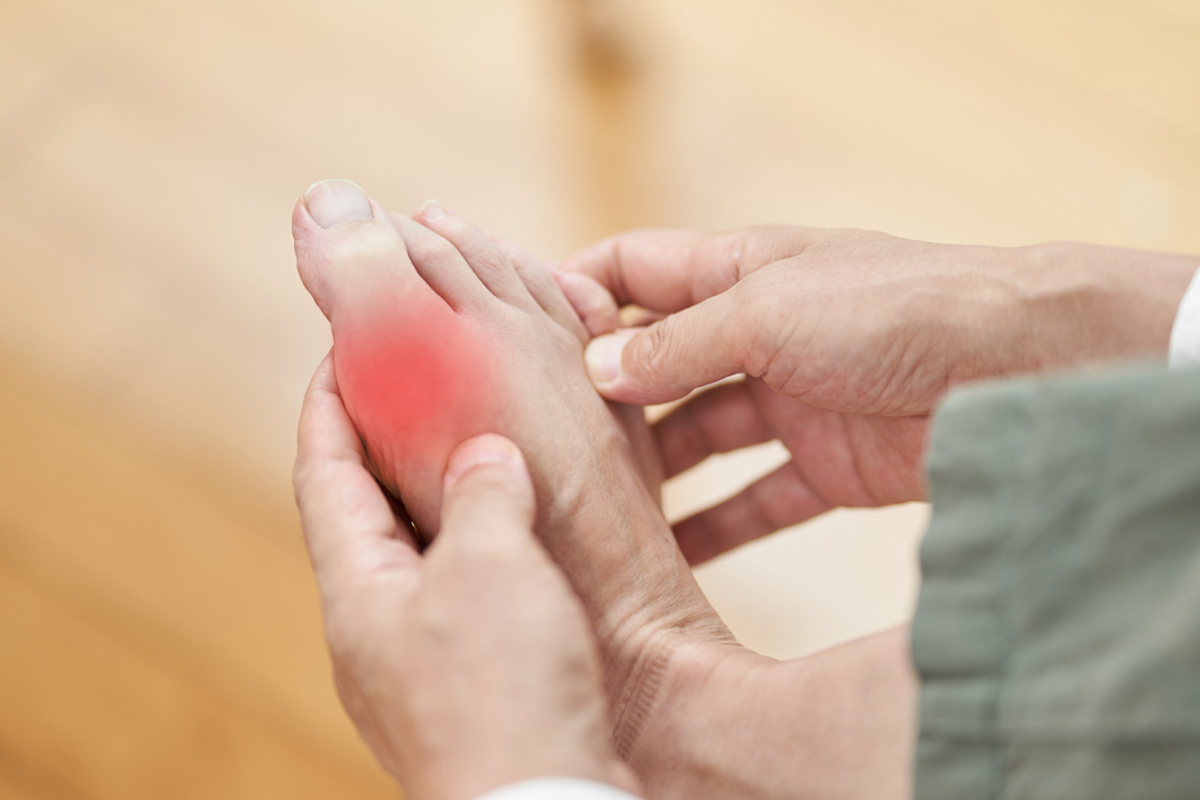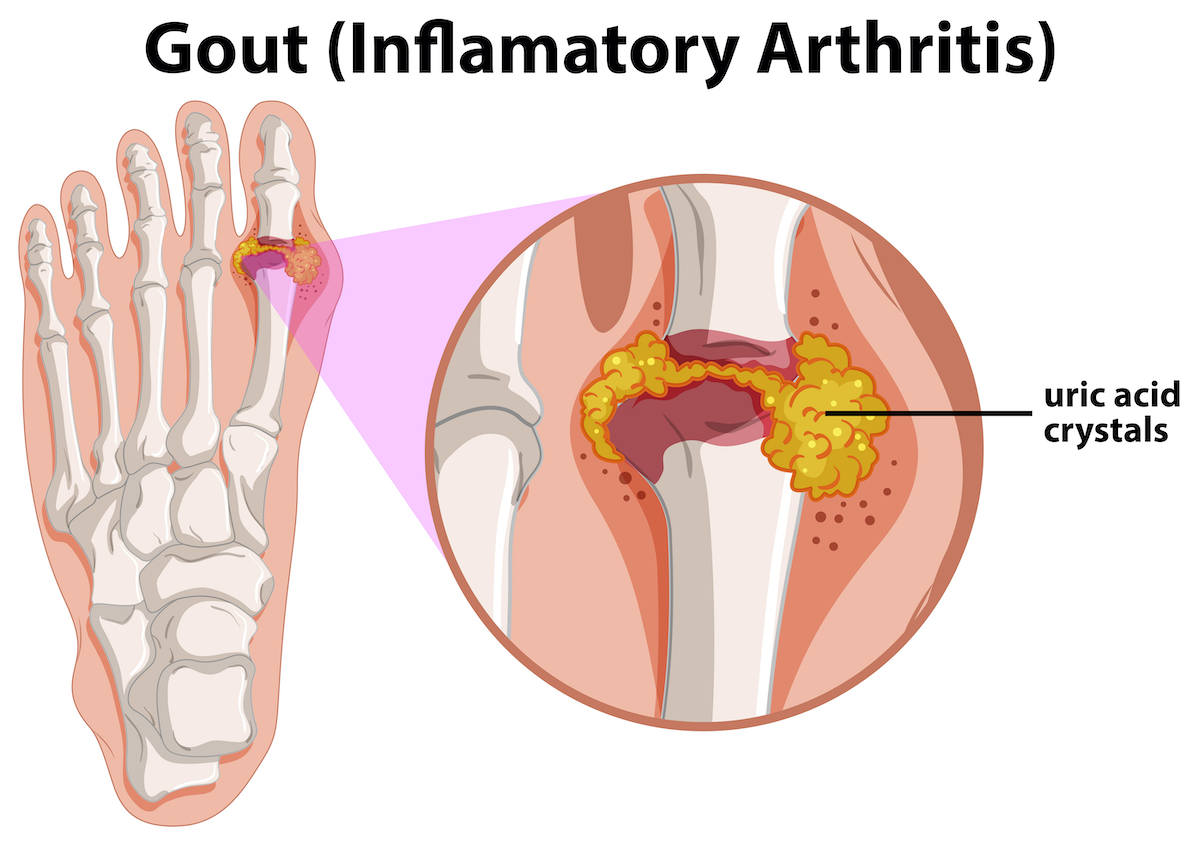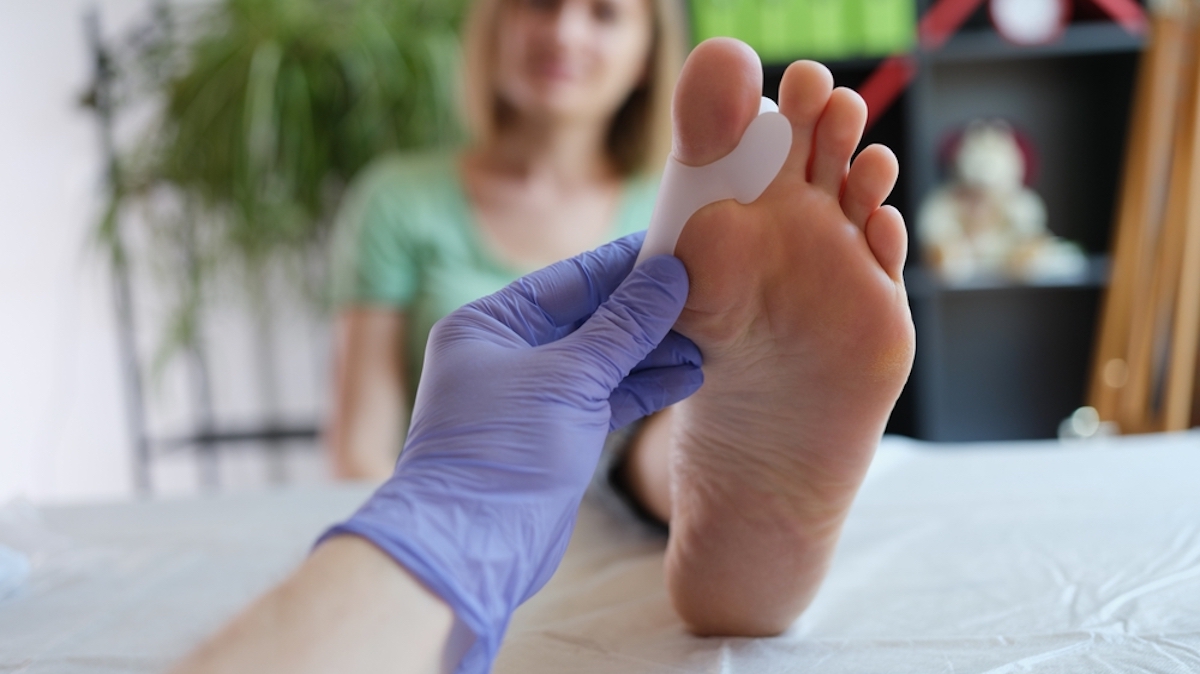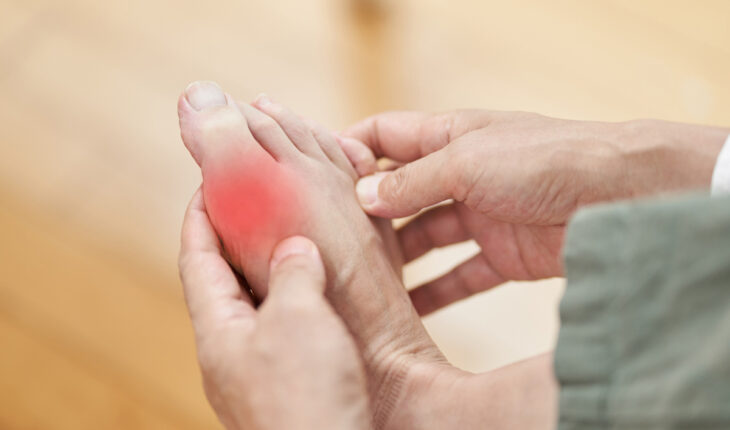Most diseases have a pretty difficult name, some are already hard to pronounce, let alone write down. Fortunately, gout is not one of them, but don’t let this fool you, because gout – also called inflammatory arthritis – is no fun. About 9.2 million Americans are suffering from this very painful form of Arthritis, which makes it a common disease in our country. Everyone can get it, which makes it important to know as much as possible about the joint disease. What causes it, and how can I recognize its symptoms? And of course: is it curable – or at least treatable?

Are There Any Risk Factors?
Before we tell you what causes gout, it’s good to know what it is. This is a type of arthritis, which means it’s a joint disease. This type falls under the category of inflammatory arthritis. This means the pain and swelling come from one (or more) joints. Everyone can develop gout, but studies tell us that there are risk factors. For example, men are 3x more likely to have gout than women. Other risk factors are:
- Menopause
- Obesity
- Heart failure
- Diabetes
- High blood pressure
- Kidney disease
- Animal proteins
- Alcohol
- Diuretics
What Causes Gout?
How can these things affect your chances of getting gout? All of this has to do with what causes this joint disease. Gout is caused by uric acid (crystals). The body makes this acid to break down certain chemicals. Normally, this byproduct is eliminated through the kidneys. If the body makes too much uric acid or the kidneys can no longer break down the acid properly, uric acid crystals form in the joints. This is also known as hyperuricemia. The “crystals” have sharp (point-like) ends that cause gout. Side note: not everyone with high uric acid levels in the body has to develop gout. However, in combination with the risk factors mentioned above, there is a chance.
When you’re suffering from gout, you often can’t spot early symptoms. Flare-ups usually start suddenly – mostly at night – and can last until a gout flare happens. This is known as the remission phase. Someone can be in remission for weeks, months, and sometimes even years. The big question is: how do I recognize a gout flare (for the first time)?

What Are the Symptoms of Gout?
As gout is an inflammatory type of arthritis, you already know it’s a joint disease. This type of arthritis is easy to recognize because the symptoms generally occur in one joint in the body. The joint in question is the big toe joint, but other joints, such as little toe joints, the ankle, and the wrist can also be affected. Symptoms you may experience, during a flare:
- Terrible pain
- Tenderness
- Swelling
- Redness
- Heat
- Lingering discomfort
- Inflammation
- Limited range of motion
So if you wake up at night because you feel like your big toe is on fire, it often means you are having a gout attack/flare. The pain experienced by patients is so severe that even the weight of a fitted sheet is intolerable for the affected joint. If you or a loved one suffers from similar symptoms and has not yet visited a professional healthcare provider, it is wise to do so as soon as possible. Your healthcare provider will hear your story, run tests and, if needed, set up a treatment plan or refer you to the right person who can help combat flare up symptoms.
To immediately start with the bad news: there is no cure for gout. This means that if you’re suffering from this type of inflammatory arthritis, you will do this for the rest of your life – with remission stages in between attacks of course. There are treatment options to treat the symptoms, but first, you have to contact your professional healthcare provider to schedule an appointment to get diagnosed.

Is Gout Treatable?
After hearing about your physical symptoms, your healthcare provider will need to run some tests to get the right diagnosis. In addition to a physical exam, he or she will take blood, order pictures – via CT, ultrasound, or MRI – and possibly do an aspiration from the affected joint. If your symptoms are indeed gout, there are a few ways to treat it. Options are:
- NSAIDs to reduce pain & swelling
- Colchicine to reduce inflammation and pain
- Corticosteroids to relieve pain and swelling
- Meds to help lower your uric acids levels
These treatments must all be written out by a healthcare provider. There are also things you can do yourself to prevent gout. These all have to do with lifestyle changes. Consider not consuming red and/or organ meats, alcohol, gravy, shellfish, etc. anymore. It is also good to drink enough water and exercise regularly.
Be Warned!
Without proper treatment, the condition can worsen over time. Not treating this condition, can cause urate crystals under the skin to form nodules – also called tophi – that cause additional swelling during a gout attack. Tophi can develop in several body parts, like the fingers, hands, elbows, and Achilles tendons. If the urate crystals enter the urinary tract, there is an increased risk of kidney stones.
The right treatment plan depends on how severe your symptoms are, and your overall health. Over time, you may need to change your treatment plan to maintain control of the condition. As you know, there isn’t a cure for gout, but it’s crucial to diagnose it in its early stages and help prevent further joint involvement and damage. If left untreated, gout can be disabling, causing terrible chronic pain. Finding a treatment that suits you and your symptoms is important, so make sure you’re well-informed. To help you on your way, start your search here:

